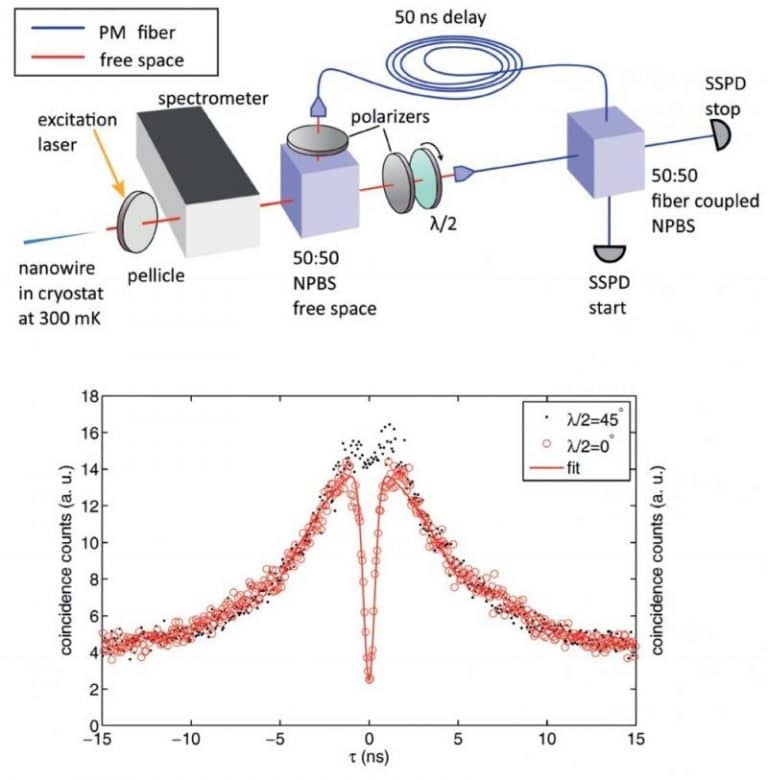When two identical single-photon waves enter a 50:50 beam splitter, one in each input port, they exit the beam splitter from the same port. This phenomenon is called the Hong–Ou–Mandel effect. In quantum optics, the Hong–Ou–Mandel effect can be used to test the degree of indistinguishability of two single photons.
In this experiment, two subsequently created photons from a quantum dot in a nanowire are travelling in the fiber-based interferometer. A non-polarizing beam splitter (NPBS) splits the short path from the long path of the interferometer. The delay on the long path is precisely matched to the repetition rate of the laser (20 MHz), so that the two photons interfere at the second NPBS. A single photon traveling the long path interferes with the next subsequent photon traveling the short path all in polarization-maintaining (PM) fibers. Two Single Quantum superconducting detectors are monitoring the output ports of the beam splitter. The single photon detector output is correlated in time to record coincident detection events.
The minimum of the coincidence counts drops towards zero when the two photons are identical in all properties and they have a good temporal overlap at the beam splitter. In contrast, when the two photons are perfectly distinguishable, for example if the polarization is rotated by 90 degrees in one of the two arms, the dip completely disappears. The precise shape of the dip is directly related to the frequency spectrum of the single-photon wave packet, and the time overlap of the photons and timing jitter of the photon detectors.
Reference: Physical Review B 93, 195316 (2016).



